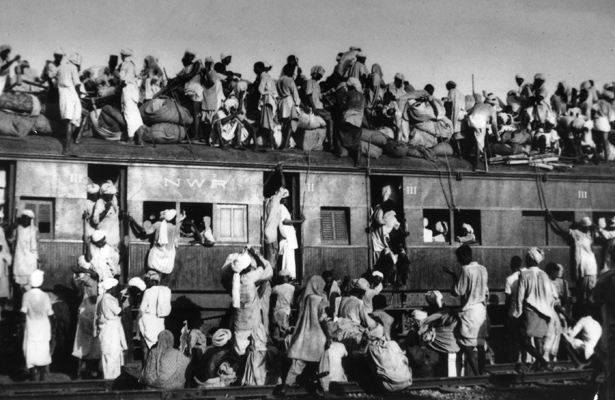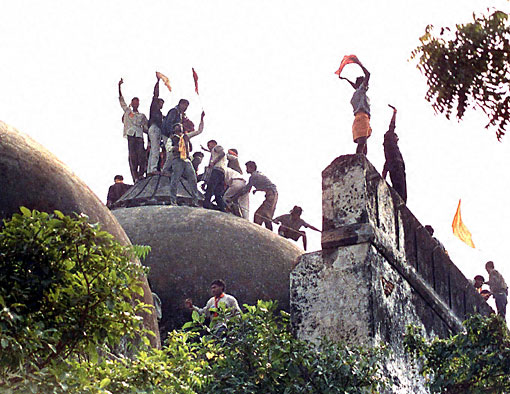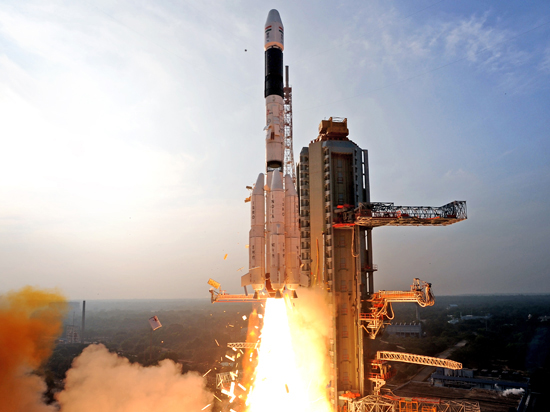India’s foundations are strong but the selfish ruling class has shown a tendency to go astray every now and then
New Delhi, August 15 (NIA): At the time the British walked away from India giving up the “jewel in the crown” 69 years ago this very day, not many in the British community in India or in Great Britain, gave the fledgling country a chance of survival.
Admittedly, what the prophets of doom said at that time had a ring of credibility, given the fact that British India was divided into a Hindu-majority India and a Muslim-majority Pakistan even as it was born. Irreconcilable differences between the Hindus and the Muslims had led to partition. The hyper anxiety to bring about partition or thwart it led to widespread riots in North India which claimed two million lives.
The British had been prophets of doom for long. Way back in 1915, the Bishop of Calcutta, Rev.J.E.Welldone, said that India would become a “battlefield of antagonistic racial and religious forces,” if the British were to leave its shores. Gen.Sir Claude Auchinleck, who commanded the Indian army in the extremely tumultuous 1940s, had a dim view of India’s ability to pull together.
“ The Punjabi is as different from the Madrassi as a Scot is from an Italian. The British tried to consolidate India but achieved nothing permanent. No one can make a nation out of a continent of many nations,” he said in 1948 after seeing the carnage which marked partition.
To be fair to both, they had reasons to be skeptical about India’s ability to pull together. Hindu society was divided by caste, linguistic and regional differences, and Hindus and Muslims clashed on religious, ideological and cultural issues often violently. There were huge economic disparities which triggered fears of a class war inspired by a resurgent Russia under the Bolsheviks in the 1920s, and the rise of Communist China in the 1940s.
From their very inception, India and Pakistan have been quarreling over Kashmir, a Muslim majority former Princely state which Pakistan claims because it is Muslim, and India will not let go of because it does not believe in the “Two Nation Theory” according to which Hindus and Muslims are two different nations which cannot coexist within a single nation state. Kashmir has been responsible for four India-Pakistan wars – in 1948, 1965, 1971 and 1999 and has been the cause of heavily militarization of the region.

However, the prophets of doom notwithstanding, the top leaders of India at the time of independence, and to a large extent the general population also, had an unshakeable belief that India will pull through. And the wise and idealistic men at the top had the vision and a blueprint for building a nation state based on the unique concept of “unity in diversity” propounded by the architect of modern India and its first Prime Minister, Pandit Jawaharlal Nehru.
In fact ,the declaration of India as a “secular state” even though 80 percent of Indians were Hindus, and the creation of language-based provinces (states), has helped India’s diverse communities feel safe and protected. These two policies spurred a widespread commitment to the idea of a single Indian nation.
This, of course, does not mean that differences do not exist. In fact, new differences have arisen in the last 69 years due to spreading political and social awareness. Indian society and politics are thus more complicated now than before. While the Indian State has, by and large, been able to reconcile differences through co-option, accommodation and affirmative action, some differences are proving to be intractable partly because of their internationalization, and partly due to the anxiety of the Indian rulers about their ability to maintain the unity and territorial integrity of India. Anxiety and fears of the country coming part have led to intolerance and harsh actions, which, in turn, have heightened the conflicts.
The Kashmir question remains unresolved because the involvement of Pakistan as a claimant to the state on the basis of a shared Islamic heritage. Room for a settlement through dialogue has shrunk because Pakistan had taken to military action several times to press its case. Pakistan’s meddling has only hardened the Indian stand, which is reflected in the excessive military presence in Kashmir, the crushing of democratic dissent there, and the whittling away of the state’s autonomy. Art 370 which was inserted in the Indian constitution to give Kashmir a wide measure of autonomy is now a dead letter.
Likewise, the anxiety to keep India together made New Delhi intolerant about autonomy sought by the North Eastern states of Mizoram, Manipur and Nagaland. The Mongoloid and largely Christian people of these states, resorted to an armed struggle, with the support of Communist China and Pakistan. The draconian Armed Forces Special Powers Act (AFSPA) is used to deny these people basic rights. Manipuri Rights activist, Irom Sharmila, was on fast for 16 years to get freedom from AFSPA. But since the Indian army strongly feels that AFSPA is necessary, New Delhi has not lifted it.
Similarly, the tribal communities of Central India have risen against exploitation and the invasion of their lands by profit hungry businessmen from outside their region. Led by Maoists called “Naxalites”, the tribals are giving the Indian paramilitary forces a hard time.
While in the first decade of independence, there was a culture of accommodation among the Indian leaders, and the top most leader, Pandit Nehru, was only “first among equals”, a change came about when his daughter Indira Gandhi became Prime Minister. The collegiate system of leadership was replaced by a virtual dictatorship. The decisive military victory against Pakistan in 1971 resulted in Indira Gandhi’s losing her head.
The tendency towards concentration of power led to a mass movement against her led by Jai Prakash Narain (JP) , a follower of Mahatma Gandhi. But JP’s movement only led to a greater concentration of power which culminated in the declaration of a State of Emergency in 1975 under which citizens lost their fundamental rights.
But underground resistance to dictatorial rule, led to the lifting of the Emergency in 1977 and the holding of fresh parliamentary elections. The elections brought the Janata Party, a coalition of disparate opposition parties, to power. But the constituent parties could not pull together and in another election held in 1980, the Congress led by Indira Gandhi came back to power.

However, a Sikh revolt in Punjab, aided and abetted by Pakistan, in retaliation for the defeat inflicted by Indira Gandhi in 1971, confronted her. But her strong action, including the storming of the Sikhs’ holiest shrine the Golden Temple only exacerbated the tension. An angry Sikh guard in her security detail assassinated her in 1984, which in turn led to a massacre of Sikhs in Delhi.
However, Indira Gandhi’s son and successor, Rajiv Gandhi, took a conciliatory approach and entered into the “Punjab Accord” and the “Assam Accord” to meet the grievances of the Sikhs and agitating Assamese.
India survived, but Kashmir was boiling again, partly on account of Pakistan’s fishing in troubled waters. The Indian state looked at the problem from the external security angle and an economic angle to the complete exclusion of the political angle. The Kashmiris wanted Azadi or Freedom or the full implementation of the autonomy guaranteed by Art 370 of the constitution. But the Indian state and the Indian polity would have none of it. India had become a “National Security State” desperate to keep its integrity by force if necessary. A mass agitation has been on in Kashmir since July 8 this year, but the Indian state refuses to budge. In this phase too, Pakistan’s overt involvement has turned a genuine local democratic demand for autonomy into a “national security problem” with the police given the license to kill and wound demonstrators at will.
The national security question also led to a rigid stand on the border issue vis-à-vis China, which had led to a war in 1962. India’s anxiety to secure its regional strategic interests has also led to conflicts with its neighbors Si Lanka, Bangladesh and Nepal.
The coming to power of the Hindu right wing under the leadership of Narendra Modi in 2014, has created tension between the Indian state and a variety of Indian interest groups. Left wing and liberal academicians and artistes, Muslims and other minorities, and the Dalits (former Untouchables) and other depressed classes, are fighting the Modi government’s intolerance.
Economically, India has forged ahead after independence, though development has a long way to go and it is still very uneven.

India’s GDP crossed the $2-trillion mark in 2014. After taking 60 years to reach the $1 trillion mark, India added the next trillion in just seven years. World Bank data show that India’s Gross National Income per person rose to $1,610 a year during 2014 from $1,560 the previous year. An analysis by The Hindu found that it would take India a little more than a decade to rise from its current ‘lower middle income’ category to the ‘upper middle income’ level.
There is a humongous amount of poverty in India. Development has been socially and spatially uneven leading to political, social and communal conflicts. Indian legal and administrative systems are not only archaic but inadequate and corrupt. All these will have to be tackled sincerely and speedily but always democratically, if India is to be what its freedom fighters wanted it to be, and prove the Western skeptics wrong.


























































